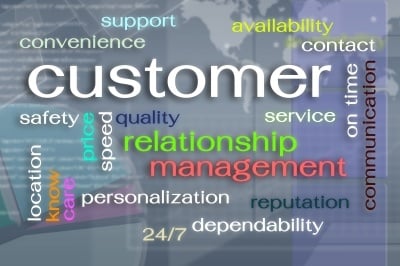E-Commerce Integration: 5 Features of a Successful Customer Portal: Part 2
E-Commerce Integration: 5 Elements of a Successful Customer Portal We have identified five key features customers require in order to use a portal to...
3 min read
Adrienne Wright Mon, Jul 20, 2015

 E-Commerce Integration: 4 Portal Design Best Practices
E-Commerce Integration: 4 Portal Design Best PracticesHopefully, our previous articles in this E-Commerce Integration - Customer Portal Part 1 and Part 2 series helped give you an understanding of the ABCs of customer portals – what the cost and service benefits are – and the five main features your customers want out of a customer portal. In this article, we are going to touch on making sure your portal doesn’t look like an afterthought. This segment will cover how to design a look and feel for your portal that reflects your brand, industry and customers. t is important to enter this process knowing that a the goal of a customer portal is to strengthen your customer’s opinion of you and your products or services.
Branding should be consistent throughout all of the print, web, and experiential marketing that your company uses. This means exactly the same styles, colors, spacing, voice, and personality to your portal as you would in your brochures, website, blog, social media, and any other representation.Of course avoid looking like your portal belongs to a different company. Test your layout and design by asking non customers if it looks like it belongs to your company. If there is any hesitation, seriously re-evaluate your design. It could be as simple as adjusting the margins or using a custom template.. Often times it is as easy as changing the navigation color or something in the user experience realm. It is crucial to obtain a fluid appearance in order to ensure customer loyalty and faith in the brand as a whole. And, like the potential for expansion referenced in the ABCs, consider that branding may change or develop as your company grows and be sure to create the portal with this potential in mind.
It is important to ensure that your portal is intuitive to your customers. Naming your topics and requests in the language a typical customer would use as search terms will ensure that they have a frustration-free user experience. Putting yourself in the seat of the user will amplify the experience and draw your attention towards service in a way that can only be beneficial to all parties. If you are having trouble with this, consider searching other similar sites to see what type of language they use.
Additionally, using recognizable icons and a text description of each icon will help your customers differentiate which section applies to their needs. Call to action icons should make the experience easier, not more challenging. For example the topic “Software Request” can be expanded to say, “To request software licenses, add a user or add an extension, make requests here”.
Keeping your primary navigation “above the fold” increases satisfaction with the customer’s user experience. As there may be a large number of navigation topics, you may need to subgroup them for easier navigation. Some users may be using a large computer screen or a phone or a tablet. There are several other organizational things you can do to make the customer’s experience more streamlined:
As previously mentioned in the ABCs of efficiency, the first blog on our series about Ecommerce Business Customer Portals, knowing your customer’s frequent questions is an ideal mining opportunity to create a knowledge base, FAQ section, or blog/help entries that will add value to your portal. With all of this information, your customers just may end up coming to you when they need absolutely nothing! Being a resource of information elevates your business: no longer merely a site for customer service, your site becomes prime real estate for community involvement. Don’t forget to review the 5 Key features of a Successful Portal when designing the knowledge base.
In case you missed the first two blogs in our series:
Part 1: E-Commerce Integration ABC's: How Customer Portals Boost Satisfaction: Part 1
Part 2: E-Commerce Integration: 5 Features of a Successful Customer Portal: Part 2
About I-Business Network:
Before you move to the Cloud or purchase an add-on for your system, give us a call and we will be happy to answer any questions you may have. I-Business Network has more than a decade of experience hosting a variety of ERP software and add-ons. We can walk you through the environmental needs of your software, what add-ons are recommended, and what you should expect from a Cloud provider.
Visit us at I-BN.com or contact Bob Tobey at 678-627-0646 ext. 231 or btobey@i-bn.net for help evaluating your ERP options. Whether you are outgrowing QuickBooks, another entry level accounting software, or if you need to move to cloud hosting with a cloud ERP solution or hosting your existing ERP software.
I-Business Network (I-BN) is an ERP and cloud solutions provider since 1999. Established by professionals in the accounting and software industry, I-BN has provided cloud hosting and business solutions including industry-specific solutions for distribution, light manufacturing and professional services. I-BN specializes in sales, implementation and cloud hosting for ERP software. We have deep experience and knowledge of Sage 100 ERP and SAP Business One software and understand its unique requirements and the support that you will need. Our national network of business software solution providers enables us to provide a local presence for training, implementation and support.
I-BN hosts a large number of cloud accounting software (ERP) applications including:
Another version of this blog was previously posted on the I-BN Blog: Part 3: Portal Design Best Practice
Image courtesy of www.freedigitalphotos.net by Stuart Miles

E-Commerce Integration: 5 Elements of a Successful Customer Portal We have identified five key features customers require in order to use a portal to...
1 min read
E-Commerce Integration: The ABC’s of Creating a Customer Portal There are many benefits of using the Cloud to create a customer portal for your...

Cloud ERP Consultants Review the Power of the Portal Most people don’t generally start out looking for and ERP solution—they start by considering...